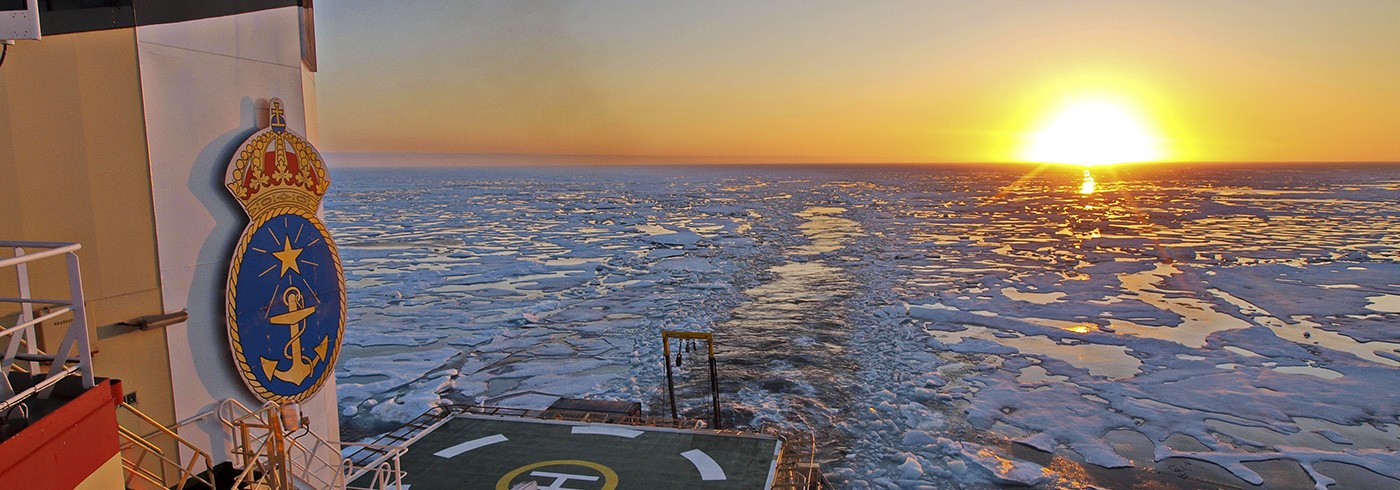We departed from Barrow according to plan, just after 09:00 local time. The remaining food supplies arrived by boat during the morning. During the entire night, our team responsible for the so called “mid-water sonar” had been busy with calibration procedures. This is done by placing three fishing poles with lines attached to a copper sphere. One of the poles is placed at the bow of the ship, while the other two are placed on each side of the ship. The idea is to be able to control the small copper sphere so it hangs below the sonar transducer underneath the ship. When the sphere is placed correctly, the sonar is operated and collects data from a well-known acoustic target allowing calibration. This operation was far from simple due to strong currents in Bering Strait. But the team did work non-stop through the evening and night until most of the pulses were calibrated, which will allow us to analyze the collected data about the water column much more accurately. We are specifically interested to get a quantification of potential gas flares that we may encounter during the cruise.
During the transit to our first working area, Box 1, we had very nice weather conditions. Calm and only some small swell from the south. Oden has an array of echo sounders installed to map the water column, seafloor and sub-bottom sediments. This means that we can map and collect scientific data all the time.
The sonar systems showed many interesting geological features on our way to the first working area. The marine geologists onboard, including myself off course, were particularly thrilled to see the fantastic sediment layering below the seafloor. Traces of old river channels formed during past glacial periods when sea level was lower could be seen not too far from Barrow and much more. Huge areas of the Arctic Ocean continental shelves, today consisting of shallow seas, were during the glacial periods land. This is how permafrost could form in areas that today are water covered.
We reached our first working area in the evening 22 August. Our plan was to here first deploy the electromagnetic system brought onboard by the Russian team led by my co-Chief partner Andrey Koshurnikov. After an initial setup time and some, for geophysical equipment, standard frustration period when the equipment does not work properly, the system began to collect very good data!
The waves built up more and more over the day and into the night of August 23. We could neither do coring nor CTD, but we could run more electromagnetic survey lines and collect data with Oden’s sonar systems.


